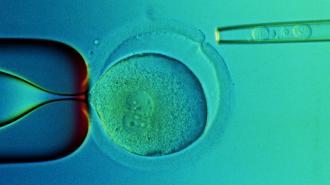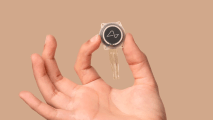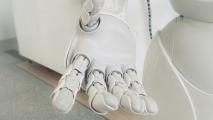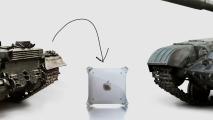Replacing the immune system can boost cancer survival
Combining stem cell transplantation and immunotherapy could be the key to improving treatments for one of the deadliest forms of childhood cancer: neuroblastoma.
The challenge: Neuroblastoma is a rare form of childhood cancer, with only about 700 cases reported in the US each year. However, it remains the most common cancer among infants. It also has one of the lowest survival rates for all pediatric cancers, and in total, it accounts for roughly 15% of all childhood cancer deaths.
Neuroblastoma tumors most commonly develop in the adrenal glands, located on top of each kidney and are part of the sympathetic nervous system. When kids develop high-risk neuroblastoma tumors that spread throughout the body, conventional treatments like chemotherapy and radiation often fail, leaving these children with a survival rate of just 15%.
Immunotherapy — where the immune system is strategically stimulated to attack cancer — can be used to treat neuroblastoma. But the problem is that prior treatments, such as chemotherapy, can weaken the immune system, specifically the natural killer (NK) cells that target and eliminate cancer cells. That’s where stem cell transplantation steps in.
A “new” immune system: One potential way to boost the efficacy of immunotherapy for neuroblastoma is to first give patients healthy stem cells that can make the immunotherapy work — specifically, by amplifying the effect of an antibody, called dinutuximab beta, that targets cancer.
That’s the takeaway of a recent study published in the Journal of Clinical Oncology, which found that children with high-risk relapsed neuroblastoma who received this treatment had significantly higher long-term survival rates than those who did not. (Participants also did not receive any chemotherapy, radiotherapy, or other experimental anticancer medication during the treatment.)
“After the transplantation of stem cells from a parent, the patients are equipped with a new immune system,” said Prof. Ruth Ladenstein, MD, co-first author of the study, in a statement. “This enables a better immune response to the subsequent immunotherapy and clearly improves the outcome.”
One key to the treatment was who donated the stem cells. The body sometimes rejects transplanted stem cells, resulting in complications like graft-versus-host disease (GVHD), where transplanted cells begin attacking the recipient’s own cells. Using stem cells from family members, especially those that are haploidentical (or partially matched), significantly reduces the risk. That’s why patients in the recent study received haploidentical stem cells, which resulted in only two cases of GVHD among 68 participants.
The results showed an overall survival rate of 53% over a five-year period. That’s much higher than the general survival rate for neuroblastoma, and also higher than the 23% five-year survival rate that the same team reported in a previous study, which involved haploidentical stem cell transplantation but not immunotherapy.
Further research still needs to determine exactly how this strategy improves survival rates for children with high-risk neuroblastoma. The researchers also noted that previous studies suggest that chemotherapy in conjunction with this kind of immunotherapy could also be a promising treatment.
This basic strategy — combining immunotherapy with other types of treatments — is a hot topic in cancer research, though conducting the necessary experiments is slow and costly, as a 2022 review published in Frontiers in Immunology noted:
“Current combined strategies are complex because the potential combination approaches far exceed the available human and technical resources. There is an urgent need for us to test these combinations in appropriate preclinical models and to accelerate clinical translation through novel approaches to clinical trial design.”






